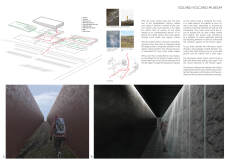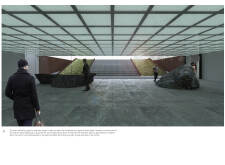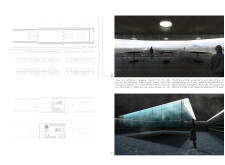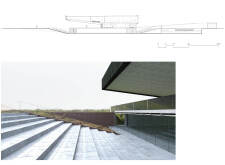5 key facts about this project
The design features a series of interconnected spaces, including exhibition halls, an information center, and a café. The museum begins with a thoughtfully designed arrival area that includes ample parking and a gradual descent that symbolizes the journey into the earth's geological layers. The exhibition halls are expansive and adaptable, allowing for various displays that showcase Iceland's volcanic history. An information center acts as an educational hub, providing resources that connect the visitor experience with the geological context of the region. The café area is strategically placed to offer panoramic views of the surrounding landscape, enhancing the visitor’s experience with an appreciation of their natural surroundings.
The architecture employs a variety of local and sustainable materials. Corten steel is used in the exterior façade, giving the building a rugged appearance that mirrors the volcanic terrain. Glass walls facilitate transparency, connecting interior spaces to the external environment. Basalt stone plays a critical role both structurally and aesthetically, reflecting the geological materials prominent in the region. Concrete is employed throughout the structure, providing a solid foundation and durability.
Unique design approaches set this project apart from typical museum designs. The integration of geological metaphors into the spatial organization reflects the physical characteristics of the landscape, allowing for a seamless transition from the external environment to the internal spaces. The deliberate descent into the museum creates a narrative journey that engages visitors and encourages reflection on geological processes. Additionally, the use of geothermal heating emphasizes sustainability and environmental responsibility, aligning the building's function with its natural context.
The architectural composition balances functionality with a strong sense of place, ensuring that visitors not only learn about volcanology but also experience the beauty and power of the Icelandic landscape. The design promotes interaction between users and the rich geological features of the area, reinforcing the educational message of the museum.
For further insights into this architectural project, viewers are encouraged to explore the architectural plans, sections, and overall design details, which provide a comprehensive understanding of its conception and execution. Engaging with these elements will offer a deeper appreciation of the innovative architectural ideas and design strategies that constitute the Iceland Volcano Museum.


























